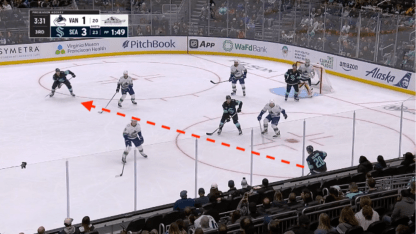What makes Montour’s skating so good? Few are better to ask than Kraken assistant coach, Jessica Campbell who has served as a skills coach to multiple future and current NHL players.
“There's all different types of skaters, right?” Campbell said. “The one thing that makes (Montour) such a dominant player is his speed…his power in his skating, so more the technical; but then there are the tactical elements, where he's extremely evasive.
“He's comfortable on his edges, so that allows him to move east, west, laterally, especially as an offensive defenseman. It makes him very dangerous and hard to defend as a forward as well. In all areas, (his skating) definitely complements his style of play. It makes him the player that he is.”
Campbell calls this suite of skating skills “edge dynamics.” When asked to explain, she describes it as being able to manipulate the on-ice situation in front of you using your feet.
So how does Montour do that? There are plenty of little details in how the right-handed defender skates, but we can start with a few. Let’s dig in.
Going back to the clip above, the Kraken are on the power play. As the quarterback, Montour doesn’t just hold court at the top of the zone, he moves throughout space contributing in a variety of ways.
First, he drops in on the right side for a shot attempt, then he executes a retrieval to keep the puck in play (a strength of Montour’s according to Campbell). Next, he shifts to the left flank. Watch how his strides – including a slight heel-to-heel turn – keep him constantly open as a passing target and thus a scoring threat.




















